The Super Tuesday Democratic presidential primaries powerfully shows the strengths and weaknesses of Senator Bernie Sanders's quest for the presidency.
Sanders lost by large margins in all Southern states, as he garnered somewhat under 20 percent of the Black vote and, at best, a third of the Latino electorate. His ability to beat Clinton among white voters of all class backgrounds, as well as his pockets of support among voters of color, enabled him to win the Minnesota and Colorado caucuses and the Vermont and Oklahoma primaries, as well as only lose by 1.5 points in Massachusetts. Much of Sanders' difficulty among voters of color derives from his being previously unknown on the national scene, his representing a lily-white state, and the Clintons long-lasting (fundraising) ties to Black and Latino elected officials. In addition, Clinton benefits from having served as a loyal Secretary of State to a president whose back most in the African-American community still have against racist right-wing attacks.
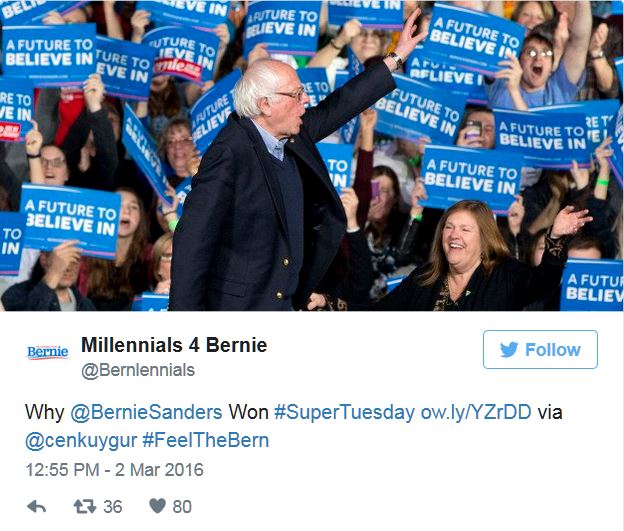
The surprising strength of the Sanders campaign has made redressing rampant economic inequality the signature issue of the 2016 presidential campaign and has made the term "democratic socialism" a legitimate part of mainstream U.S. political discourse. On Tuesday March 1, 2.3 million voters pulled the lever for an avowed "democratic socialist," one running on a robust New Deal liberal or social democratic program calling for progressive taxation to fund a wide array of public goods. If Sanders can maintain his strong support among the white working class and middle class progressives and improve his performance among a more heavily unionized Black and Latino electorate in the Northeast, Midwest and West Coast then he could come into the Democratic convention with close to 40 percent of the regular delegates. To win the nomination he must significantly increase his support among voters of color; this is a difficult, though not impossible task.
While we do not have detailed polling data from the caucus and primary states that Bernie won, in these non-Southern states his overall margins probably mean he won at least 35 percent of the non-white vote, overall (though in caucus states voters of all races tend to be more left than primary voters). But given Clinton's huge margin of victory in the large Southern states of Virginia, Georgia, and Texas, Sanders now has a large regular delegate deficit to make-up: Clinton leads with 575 regular delegates to 386 for Sanders. (Obama emerged from Super Tuesday with a 100 delegate advantage and the proportional representation by which regular delegates are distributed enabled him to basically run out the clock on Clinton over the next three months of primaries.)
Sanders Challenge: Building a Multi-Racial Base
To improve his performance among voters of color - 35 percent of the overall Democratic primary electorate - Sanders will have to speak even more forthrightly about racial and gender inequality. He should deliver featured speeches on specific racial justice issues in symbolic venues, sharing the platform with activists of color who can vouch for him in their communities. At those events he will have to resist his temptation to pivot quickly to his comfort zone - the ways in which economic inequality disproportionately affect women and people of color. That is well and true, but the shared experiences of gender and racial violence and discrimination unite oppressed communities across class lines - which is why socialists recognize that racism and sexism cannot be reduced solely to economic oppression. While Sanders probably would agree with this analysis, he came of age in the early days of the New Left, before second wave feminism and movements for empowerment of people of color shifted the way leftists discuss racial, gender, sexual and national oppression. In that sense, Bernie is old school and needs to retool his rhetoric (within the limits of who he is, of course).
The campaign also faces obstacles in reaching out to voters of color that are somewhat beyond its control. The Sanders campaign underestimated the broad loyalty of the Black community to President Barack Obama, loyalty inspired by the right's blatantly racist attacks. Sanders claims he wants to build upon Obama's accomplishments, but Secretary Clinton served in his administration - and Sanders correctly criticized the administration's neoliberal policies that bailed out the bankers and not the foreclosed.
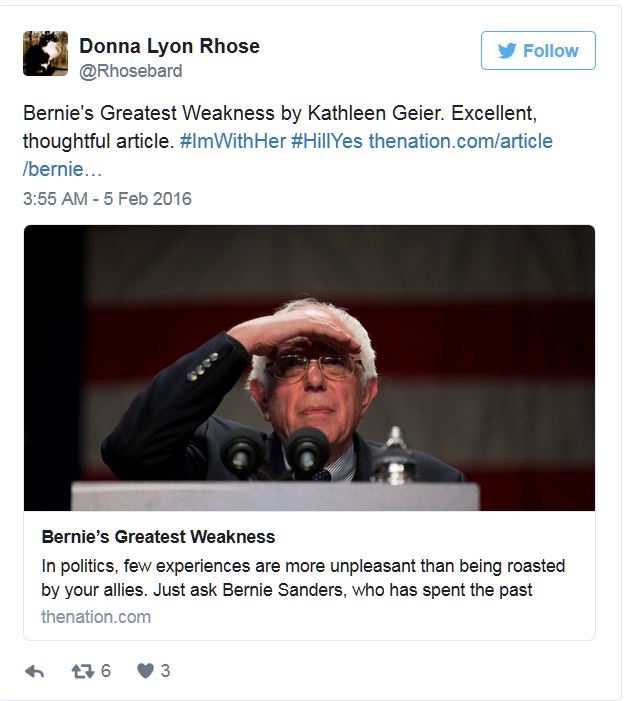
Moreover, older Southern Black Democratic voters are more moderate than their Northern counterparts. They have deep historical memories of the violence of Jim Crow past and are more pragmatic in their political desires. They want to defeat the Republicans and they believe that the Democrats are better on racial justice issues than are the Republicans (see Supreme Court appointments, voting rights, and affirmative action). And given Sanders relatively new face, many believe (rightly or wrongly) that Clinton, due to her experience in two administrations, has a better chance of defeating the Republicans and of governing effectively. Democratic voters who live in the 26 states in which Republicans rule all three branches of government (including all the states of the former Confederacy) know that they have a lot to lose from Republican victory: state refusal to take Federal Medicaid money for low-income working families, restrictive voter ID laws and gerrymandering, resistance to raising the minimum wage, and inadequate funding of public education.
Sanders' Revolutionary Gain: Inspiring Millennials Behind a Social Democratic Program
Yet, even the most ardent Sanders supporters at the campaign's opening last May could not have envisioned how far the campaign has come, particularly its overwhelming support among millennials, including a fair proportion of millennials of color. The campaign has forced Clinton to claim she will regulate the banking industry more tightly than will Sanders and that she is a more passionate advocate of racial, gender, and sexual equality. Her support of her husband's punitive welfare reform violates those claims, except that the mainstream media and Democratic political elites still laud such policies as a "success." Clinton claims to favor realistic and incremental reform. But even her moderate reforms could not pass a Republican Congress. Sanders is more the realist because he acknowledges that his program, no more radical that FDR's 1944 Economic Bill of Rights, would never be enacted unless mass social protest and progressive electoral victories overtook the stranglehold that corporate power has on the elites of both parties. Clinton is the utopian, anti-realist when she claims that electing a moderate Democrat can overturn 40 years of bipartisan, upwardly redistributive neoliberal policies that she and her husband helped institute.
Much of the energy of the Sanders campaign derives from the millennial generation's disappointment that the "hope and change" president did little to alleviate student debt or transform an insecure job market that provides even college graduates contingent forms of work devoid of adequate wages and benefits and without a clear upward career trajectory. The Occupy movement in a metaphorical sense began the political revolt of the college educated barista class. The Sanders campaign appeals to them because he has made clear that there is no individual, "private" solution to these systemic social problems and that absent progressive taxation financing a strong "social wage" (e.g., Medicare for All and publicly-financed childcare), the "free market" will yield radically unequal life opportunities.
Commitments formed in one's political youth stick with individuals over their lifetimes. Hence the baby boom generation is, overall, more liberal than those who came of age during Eisenhower. From 1985 until 2005, seniors voted to the left of the general population because they came of political age during the New Deal. Today, the white seniors of the Eisenhower generation anchor conservative politics. The more immigrant and multi-racial composition of millennials leads them to be more accepting of a future majority non-European United States than are many anxious older whites. The latter often say they are "losing our country," a nation where white skin privilege had real economic purchase for even the white working class before deindustrialization and deunionization took off in the late 1970s. If movements for low-wage justice, Black Lives Matter, immigration reform, equitable public education, and affordable higher education can move "from protest to politics," than the millennial generation may reshape U.S. politics in a manner similar to the activists of the 1930s and 1960s. On the other extreme, Donald Trump's campaign may appeal to older Reagan Democrats who often prioritize their racial or cultural identity over their class concerns. The Democratic establishment's impulse (as evidenced by recent comments by former Pennsylvania Governor Ed Rendell) will appeal to moderate suburban Republicans belief in "tolerance" if Trump is the nominee. But if the likely Democratic standard bearer refuses to run on a robust economic justice program, she will not garner the turnout from Sanders supporters, swing white working class voters, and millennials that she needs to win.
Building a New "Rainbow Coalition" that Lasts Beyond the Sanders' Campaign
Many activists in and around the Sanders campaign have long urged the campaign to focus on outreach to communities of color and to explicitly state the campaign aimed to rebuild a "Rainbow Coalition" for social justice. We had more faith than Sanders' original white Vermont inner circle that he would do well in New Hampshire and Iowa and then have to address a more diverse electorate. Sanders loyalists - often young whites new to politics - argue that the campaign has done a fine job on highlighting racial injustice and point to his strong racial justice program and solid positions on immigration reform. But political coalitions are built by bonds of trust forged (often uneasily) through common struggle. Apart from the labor movement, progressive social movements are almost as segregated as the the rest of American society - a reality that too many white leftists fail to grapple with. To build a more multi-racial left, progressive whites must prioritize work as loyal allies in struggles for racial justice led by activists of color.
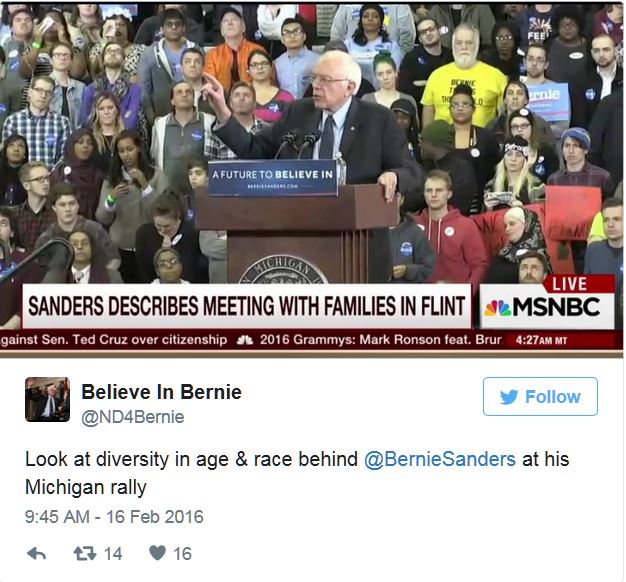
In contrast to Sanders fairly tepid ventures into communities of color, Jessie Jackson's in his 1984 and 1988 campaigns boldly ventured into lily-white states, speaking at farm foreclosures and picket lines from Maine to Iowa. Jackson made clear that whites struggling for social justice would be an integral part of his "Rainbow Coalition." Sanders has campaigned at historically black colleges and universities (HBCUs), but the campaign has to hold more events in Black and Latino venues of symbolic political import and speak to how police violence, job and housing discrimination, inadequate public education and mass incarceration affect people of color across lines of class, while disproportionately harming working class and poor people of color. In addition, the campaign must continually highlight its commitment to an expedited path to citizenship for undocumented peoples. Sanders can and should proudly proclaim that he is the one candidate in favor of class, racial, gender, and sexual equality. He should confront Hillary's claim that he is a single issue candidate and that she is the tribune for racial and gender equality. Her support of neoliberal criminal justice and welfare reform policies destroyed the lives of the poor people and children of all races. And one cannot be a champion of social justice if one promises to govern in a "realistic and effective"manner.
In the final analysis, the influence of the Sanders campaign on the future of American politics will be determined by what comes after the campaign. This is the question Sanders activists have to answer as the primary season winds down. Will the independent local Sanders groups, Labor for Bernie, People for Bernie, Democratic Socialists of America, the Working Families Party and the progressive unions that have endorsed Sanders (including the Communication Workers of America and the National Nurses Union) create a post-electoral coalition that fights for Sanders' platform (and "Sanders Democrats" and independents) at the federal, state and local level? Will local Bernie groups embed themselves in social movement and electoral politics and engage in a dialogue with activists of color as to how predominantly white progressive groups can become firm allies in struggles against racism. Too often, even the most progressive of electoral activity subsides when the charismatic candidate leaves the electoral scene (see the failure of activists in the 1988 Jessie Jackson campaign to build a permanent "Rainbow Coalition").
Ultimately, Sanders' "political revolution" won't be built by Bernie, but by us. And that us must be as diverse as those who constitute the 99 percent.
[Joseph M. Schwartz is a Professor of Political Science at Temple University and a National Vice-Chair of Democratic Socialists of America (DSA). He was active in the 1984 and 1988 Jackson campaign, as well as in the movement behind Bernie Sanders' 2012 presidential effort.]
This content was originally published by teleSUR at the following address: http://www.telesurtv.net/english/opinion/After-Super-Tuesday-Building-a-Sanders-Rainbow-Campaign-20160302-0034.html

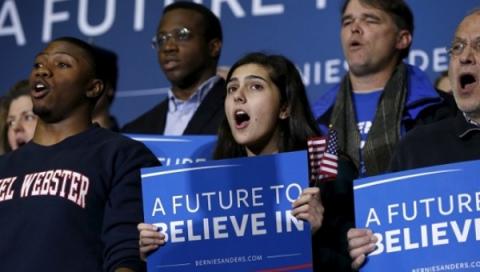
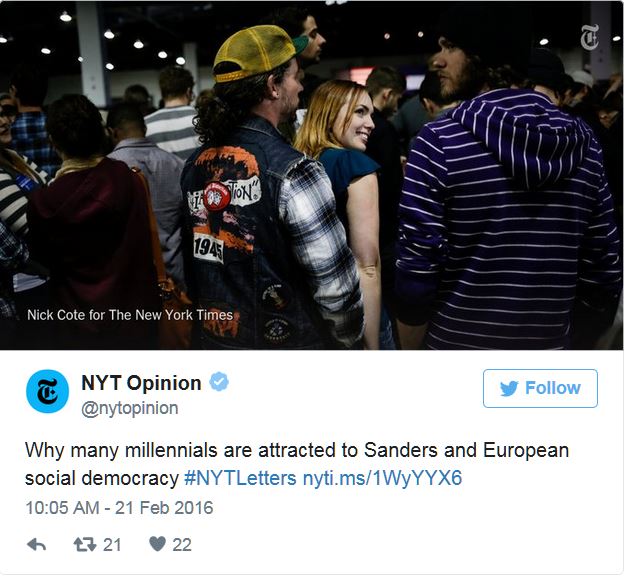
Spread the word